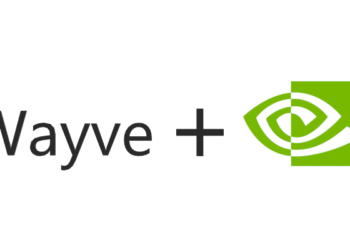Introduction
In the dynamic realm of digital innovation, non-fungible tokens (NFTs) have emerged as both a catalyst for creativity and a subject of intense debate. These unique digital assets, powered by blockchain technology, have redefined how we perceive ownership, authenticity, and the exchange of digital content. In this comprehensive exploration, we’ll delve into the dual nature of NFTs, unveiling the unparalleled benefits they bring to creators and consumers while also examining the critical challenges and criticisms that have surfaced in their wake.
Benefits of NFTs
1. Ownership and Authenticity:
NFTs offer a secure and transparent way to prove ownership and authenticity of digital assets. The blockchain ledger ensures a verifiable and tamper-proof record of ownership, eliminating concerns related to counterfeit or unauthorized reproductions.
2. Global Accessibility:
NFTs enable creators to reach a global audience directly. Artists, musicians, and other content creators can connect with fans worldwide without the need for intermediaries like galleries or record labels. This direct relationship enhances the potential for global exposure and revenue generation.
3. Programmable Assets:
Smart contracts associated with NFTs allow for programmable functionalities. Creators can embed specific conditions, such as automatic royalty payments, into the smart contract. This ensures that artists receive a percentage of the resale value whenever their NFT changes hands, creating a sustainable revenue stream.
4. Interoperability:
NFTs can be transferred and traded across different platforms and ecosystems. This interoperability enhances liquidity in the market, making it easier for users to buy, sell, and trade NFTs across various blockchain networks and marketplaces.
5. New Revenue Streams:
NFTs provide creators with new and diverse revenue streams. Beyond traditional sales, creators can earn royalties on secondary market transactions. This shift in revenue models empowers artists and encourages them to continue producing valuable content.
6. Community Engagement:
NFTs facilitate direct interaction between creators and their audience. Through tokenized communities, creators can engage with fans, offer exclusive content, and build a loyal following. This community-centric approach fosters a sense of belonging and support.
7. Innovation in Ownership Models:
NFTs enable innovative ownership models. Fractionalized ownership allows multiple individuals to collectively own a high-value NFT, democratizing access to exclusive digital assets that might otherwise be out of reach for individual buyers.
Challenges and Criticisms of NFTs
1. Environmental Concerns:
The energy consumption associated with certain blockchain networks, particularly Ethereum, has raised environmental concerns. The proof-of-work consensus mechanism used by some blockchains requires significant computational power, contributing to a large carbon footprint. This issue has led to discussions about the need for more sustainable blockchain solutions.
2. Market Saturation and Speculation:
The rapid growth of the NFT market has led to concerns about market saturation and the speculative nature of some transactions. Prices for certain NFTs can be highly volatile, raising questions about the long-term sustainability of valuations and the potential for market bubbles.
3. Legal and Copyright Issues:
NFTs bring forth legal challenges related to intellectual property rights and copyright. Determining ownership and the rightful creator of a digital asset can be complex, leading to potential legal disputes. The decentralized and pseudonymous nature of blockchain transactions can add layers of complexity to resolving these issues.
4. Scalability and Gas Fees:
Some blockchain networks, especially Ethereum, have faced scalability issues and high transaction fees (gas fees) during periods of high demand. This can impact the user experience and limit the accessibility of NFTs, particularly for smaller creators and buyers.
5. Market Manipulation and Fraud:
The relative novelty of the NFT market and the digital nature of transactions make it susceptible to market manipulation and fraud. Issues such as fake or misleading listings, pump-and-dump schemes, and counterfeit NFTs have been reported, requiring increased vigilance and regulation.
6. Perceived Lack of Tangibility:
Some critics argue that NFTs lack the tangible nature associated with physical art or collectibles. The inability to physically possess or display an NFT in the traditional sense challenges conventional notions of ownership and value.
7. User Education and Accessibility:
Understanding NFTs and blockchain technology can be challenging for newcomers. The terminology, processes, and security considerations may act as barriers to entry, limiting widespread adoption. Improving user education and simplifying interfaces could enhance accessibility.
8. Dependency on Blockchain Infrastructure:
The success and functionality of NFTs are heavily dependent on the underlying blockchain infrastructure. Changes or issues with the chosen blockchain can impact the NFT ecosystem, highlighting the need for robust and adaptable blockchain solutions.
Conclusion
while NFTs offer exciting prospects for innovation, creativity, and economic empowerment, it is essential to address the challenges responsibly. The NFT space is evolving rapidly, and finding a balance between maximizing the benefits and mitigating the criticisms will be crucial for its sustained growth and positive impact on the digital economy. Education, collaboration, and a commitment to sustainability will play pivotal roles in shaping the future trajectory of NFTs.
In navigating the landscape of NFTs, it’s essential to weigh these benefits and challenges to make informed decisions, foster responsible practices, and contribute to the sustainable development of this transformative technology.














